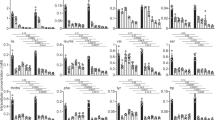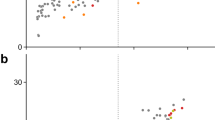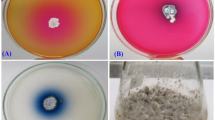Abstract
MUCH work has been carried out upon the mechanisms whereby yeast is able to utilize nitrogen from amino-acids for its nutrition, and the mechanisms worked out by Ehrlich and Stickland illustrating nitrogen uptake are well known1,2. These and other authors (for example, Thorne3) have been concerned with the value of amino-acids to yeasts simply as sources of nitrogen. Working with aspartic acid and asparagine, however, we have for some time observed that yeast growth has been stimulated under some conditions to a remarkable extent if either aspartic acid or asparagine has been present in nutrient solutions containing sugars and inorganic salts and nutrilites under various conditions of wort aeration. Under several conditions of experimental procedure, always with good aeration, it has been found that aspartic acid and asparagine added in relatively large amounts have always had the effect of increasing the yield of yeast obtained from a standard amount of fermentable sugar. Thus, under one set of conditions, it has been found that the addition of 1 gm. of asparagine would yield an additional 2.7 gm. of yeast (at 27 per cent dry matter) or 0.729 gm. of yeast dry matter. Also, while we have never been able to obtain yields of yeast (at 27 per cent dry matter) greater than 210 per cent of the hexose sugar supplied, this figure has, under some conditions, been greatly exceeded when either aspartic acid or asparagine has been present in the wort in sufficient amount.
This is a preview of subscription content, access via your institution
Access options
Subscribe to this journal
Receive 51 print issues and online access
$199.00 per year
only $3.90 per issue
Buy this article
- Purchase on SpringerLink
- Instant access to full article PDF
Prices may be subject to local taxes which are calculated during checkout
Similar content being viewed by others
References
Ehrlich, F., Ber. deutsch. Chem. Ges., 40, 1027 (1907) and other papers.
Stickland, Biochem. J., 28, 1746 (1934); 29, 288 and 889 (1935).
Thorne, J. Inst. Brew., various papers.
Koser, Wright and Dorfman, Proc. Soc. Exp. Biol. and Med., 51, 204 (1942).
Wood, Ann. Rev. Biochem., 16, 613 (1947).
Author information
Authors and Affiliations
Rights and permissions
About this article
Cite this article
WHITE, J., MUNNS, D. Utilization of Aspartic Acid and Asparagine by Yeast. Nature 165, 111 (1950). https://doi.org/10.1038/165111a0
Issue date:
DOI: https://doi.org/10.1038/165111a0
This article is cited by
-
Formation of Maillard reaction products in bread crust-like model system made of different whole cereal flours
European Food Research and Technology (2020)
-
Effect of Aspartic Acid on Growth of Plant-Virus Tumour Tissue
Nature (1950)



